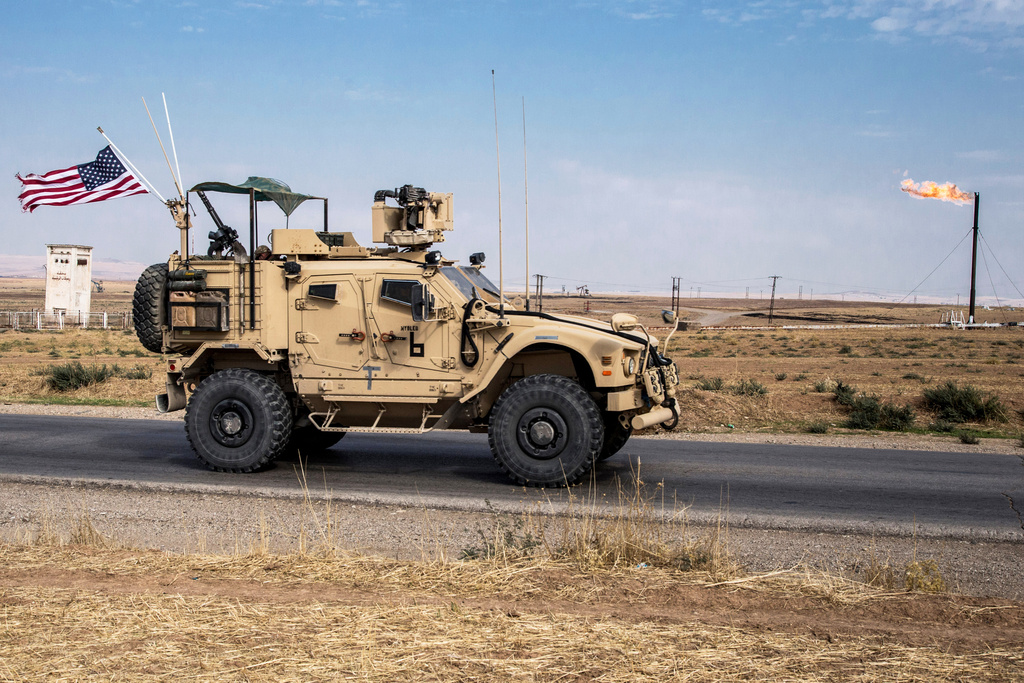November 25, 2019: Russia launches a satellite called Cosmos-2542. Ann Finkbeiner writes about space for Scientific American and other publications.
"There are these amateur satellite watchers and they post all the time," Finkbeiner said. "They saw [the] Russian satellite maneuvering near what they knew was a U.S. spy satellite and sort of getting in the same orbit and tracking it."
The U.S. took evasive action, moving its satellite away.
"And then they saw the U.S. satellite change orbit, which it can do because they have little thrusters on them and then the Russian one followed it again, and then they tracked for a while. And then the Russian one may or may not have emitted some little sub satellite," she said. "They're clearly wanting to interfere with our satellite in some way, and that's alarming."
The Russians said the vehicle was monitoring its own satellites.
But General Jay Raymond, then-head of the U.S. Space Force, told the Daily Show the Russian craft had nefarious intent and it was armed.
"I call it a nesting doll satellite. It’s a satellite that opens up and another satellite comes out and it opens up and a projectile comes out. I won’t get into all the details of what we can do but I'm very comfortable that we can protect and defend ourselves," Raymond said.
Movies have long embraced the idea that space could be a battleground, from Buck Rogers in the 1930s, to 1977s Star Wars, to James Bond’s Moonraker, to the comedy Spaceballs. But from the beginning of the space race the U.S. and Soviet Union actually did use rockets or spacecraft to gain the upper hand.
As space became increasingly contested, engineers developed weapons to destroy enemy satellites.
High Virgo, in 1959, was the first U.S. anti-satellite weapon, fired from air and detonated in orbit.
In 1975, the first crewed space station, the Russian Salyut, had a cannon that fired at least 20 high-caliber bullets in space.

NASA engages kids in STEM through national competition
The NASA TechRise Student Challenge selected 60 groups of middle and high schoolers to participate in a high-altitude balloon science experiment.
And in 1962 the U.S. detonated a nuclear missile 254 miles above the Pacific Ocean. Among other impacts, its radiation fried some U.S. and British satellites.
The main military advantage of space is to provide armies the ultimate lookout over the battlefield. Historians consider the 1991 Gulf War the first "space war."
Satellites guided precision bombs and provided American troops in Iraq a major advantage in navigation and communications.
Satellites have also played a large role in every day life. The 5,500 spacecraft in orbit today provide the backbone for modern telecommunications, internet services and financial transactions. They also keep an eye on weather, oceans and land.
Take the satellite network established by the Pentagon that’s become today’s GPS.
GPS signals are a free global tool allowing tracking of everything from animals to criminals, surveying, even ground movements from earthquakes or explosions.
But the ubiquity of satellite signals in our daily lives make the spacecraft important targets for armies to defend and in time of war — even attack.
"They're up there. They're visible. They're on predictable orbits. You know. You can't defend them. They are extremely vulnerable," Finkbeiner said.
In a 1985 weapons test, an anti-satellite missile launched by an F-15 destroyed an American research satellite 345 miles above Earth’s surface.
Since then Russia, China and India have each blown up their own satellites in missile tests. A recent Pentagon report said the fastest growing power in space is China, capable of deploying missiles, lasers and robots.
In 2018, the concern about protecting U.S. space assets led the Trump administration to create the sixth branch of the military — Space Force.
"The time has come to write the next great chapter in the history of our armed forces, to prepare for the next battlefield where America’s best and bravest will be called to deter and defeat a new generation of threats," said Former Vice President Mike Pence.
Space Force operates 77 spacecraft and has 8,600 personnel called "guardians." Delta 9 is the part of the Space Force that can "deter and when necessary defeat orbital threats."
Space Force says "a range of responses" are available to defeat those threats without adding to the space debris problem, though it declined to specify.
Its tools are all aimed, the agency says, towards countering new threats on the horizon.
In a world increasingly reliant on space, new threats to strategically important targets are shifting the modern battleground — to the stars.











